13.10.2018

There are so many ways to change the composition like, changing the focal length, changing the lens, your distance to the motif and so on. The exposure and aperture is also a part of it, but this is not what this article is about, it’s about the structure – the arrangement – of the elements in your picture. These elements are if you break them down: points, lines and areas.
View Guidance
As soon as you look at an image, the eye automatically searches for elements it finds attractive. These can be faces, strong contrasts, lines pointing in one direction. In addition to that the reading direction, in the Arabic region is read from right to left, so the image is most likely to be viewed to the right first.
With diagonal lines it easy to guide the eye and to create a pleasing view and create an exciting mood.
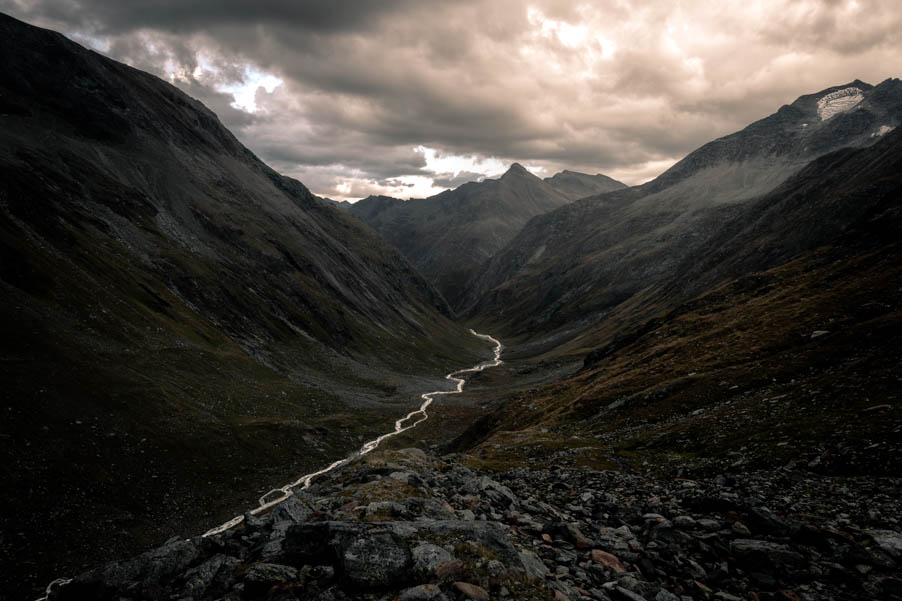 In this case the ascending diagonal – the river – holds the viewer’s eye more in the picture and is more attractive then a descending. A descending would appear calmer. The river creates also a strong contrast to it darker surrounding, which of course was helped here per editing.
In this case the ascending diagonal – the river – holds the viewer’s eye more in the picture and is more attractive then a descending. A descending would appear calmer. The river creates also a strong contrast to it darker surrounding, which of course was helped here per editing.
In landscape photography is the horizon line omnipresent. If you put the horizon line in the center of the picture you will get a boring result the most time. It recommends to place the horizon not in the middle, because it strongly influences the mood of the image. If you place it more in the bottom of the picture the image becomes “airy” and “light”, not only because you have so much sky in the picture. If you place it more on the top, the mood becomes more dramatic and the viewer gets closer to the subject.
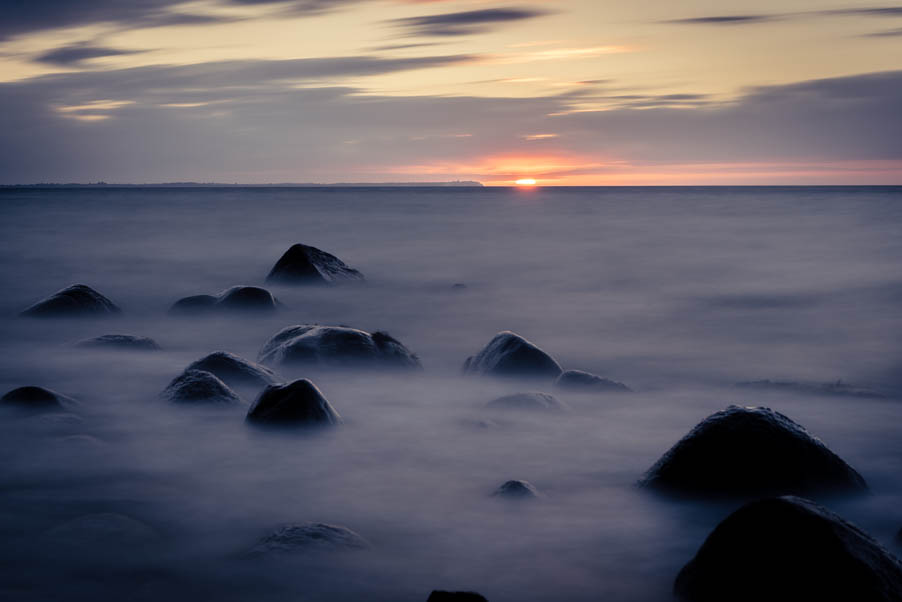 The eye wanders between the rocks and the water until it reaches the horizon line. The image is not only so dramatic due it’s editing, it’s also the placing of the horizon.
The eye wanders between the rocks and the water until it reaches the horizon line. The image is not only so dramatic due it’s editing, it’s also the placing of the horizon.
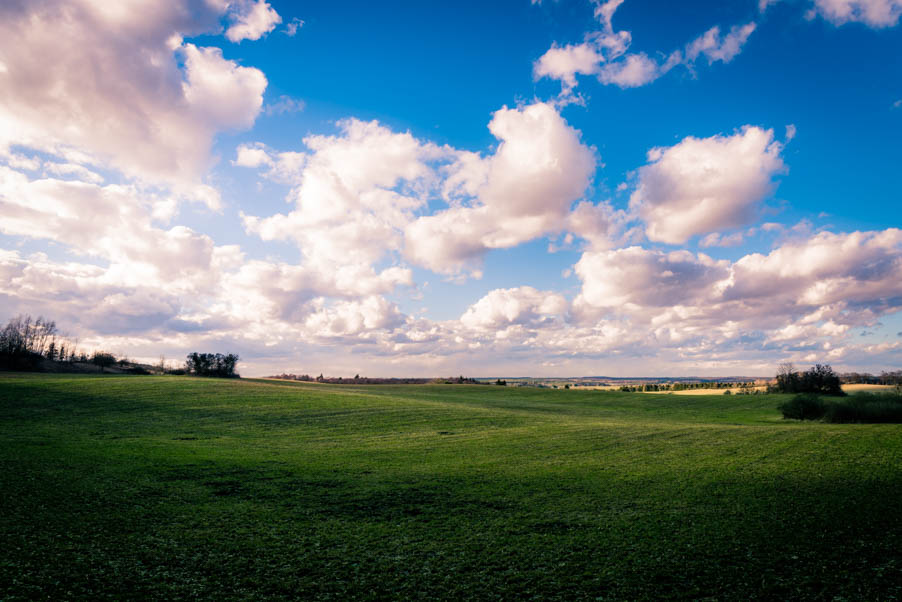 The sky takes the most place in this picture. It looks bright and friendly and conveys a lightheartedness.
The sky takes the most place in this picture. It looks bright and friendly and conveys a lightheartedness.
For even more dynamic it is also possible to put every line in a diagonal way. For example in architecture photography you look for the corners of your building and try to merge the lines of the facade into a vanishing point and for more dramatization you can hold your camera inclined.
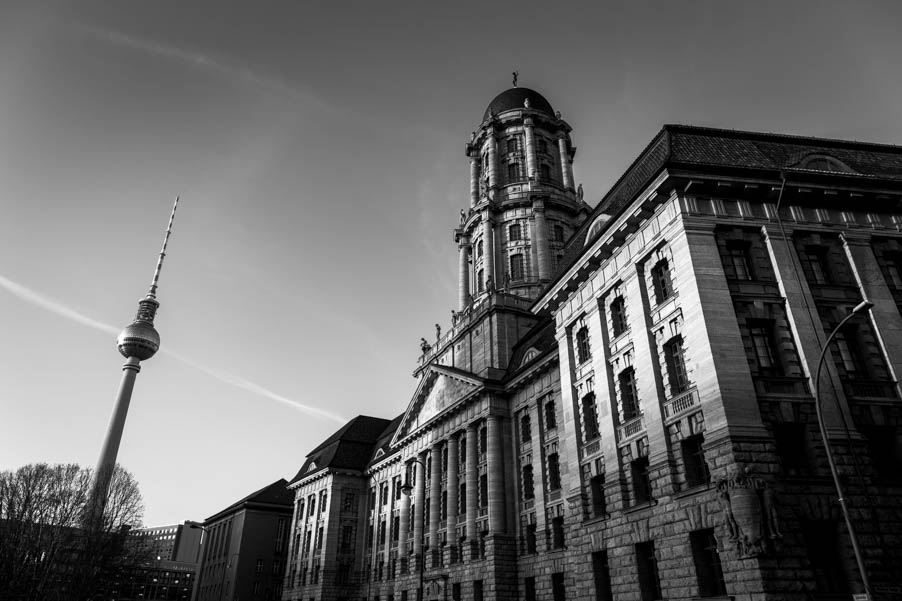 The eye starts at the city hall in the front and ends at the TV tower in the back.
The eye starts at the city hall in the front and ends at the TV tower in the back.
Symmetry ensures for calm and balance. We’ll go back to architecture and place this time our motif in the middle and try to avoid every unbalance.
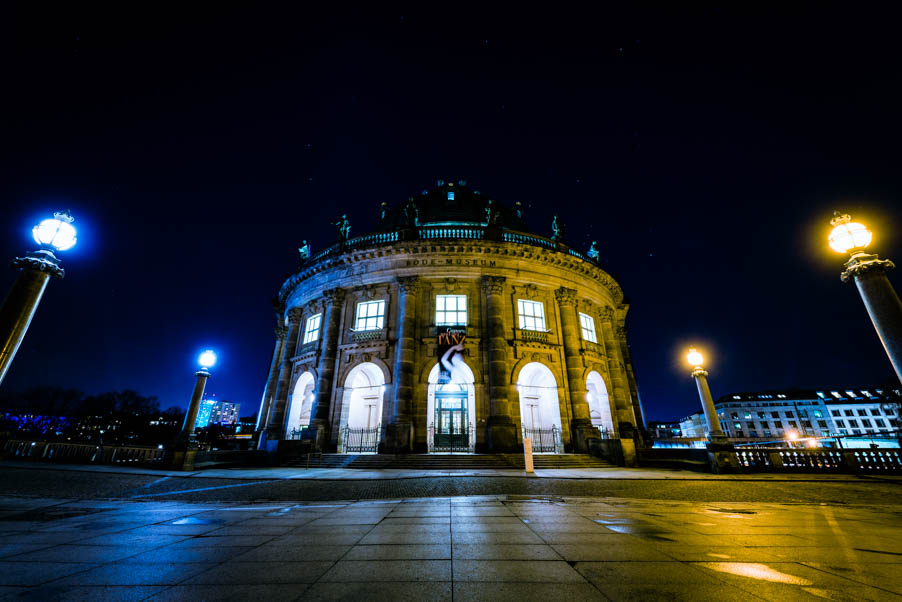 This example of the Bode Museum in Berlin shows it very well. The lanterns on the sides have the same height and are subject to the same trimming. In addition, the eye is also attracted by the strong contrast created by blue and yellow.
This example of the Bode Museum in Berlin shows it very well. The lanterns on the sides have the same height and are subject to the same trimming. In addition, the eye is also attracted by the strong contrast created by blue and yellow.
Rule of Thirds
If you only want to concentrate on your motif then the “rule of thirds” is one of the most common rules for composition. If you place your subject by this rule the image gets the most time a harmonic structure. The picture is split in three parts of the same size and the significant elements are placed on or at the intersections of this raster.
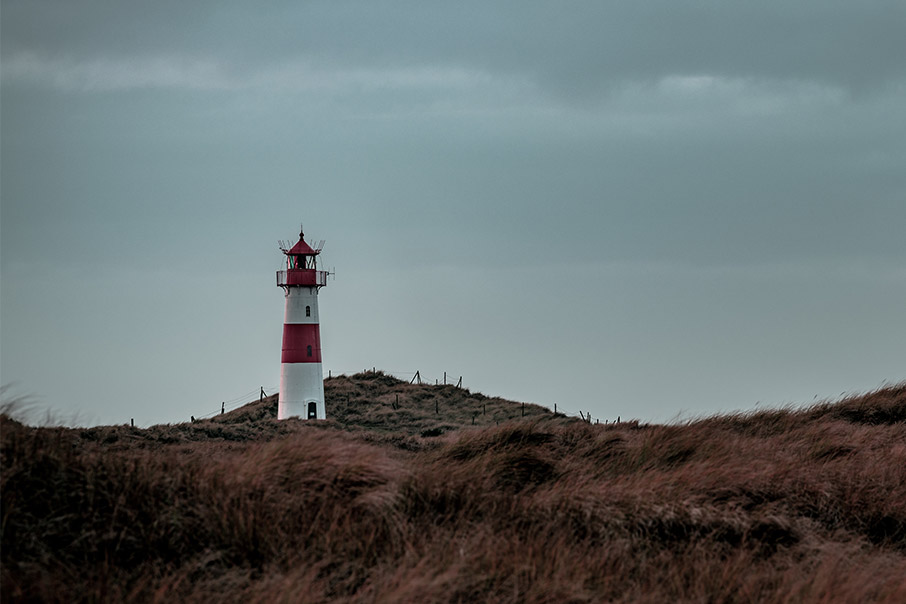 The lighthouse is set on the left intersection.
The lighthouse is set on the left intersection.
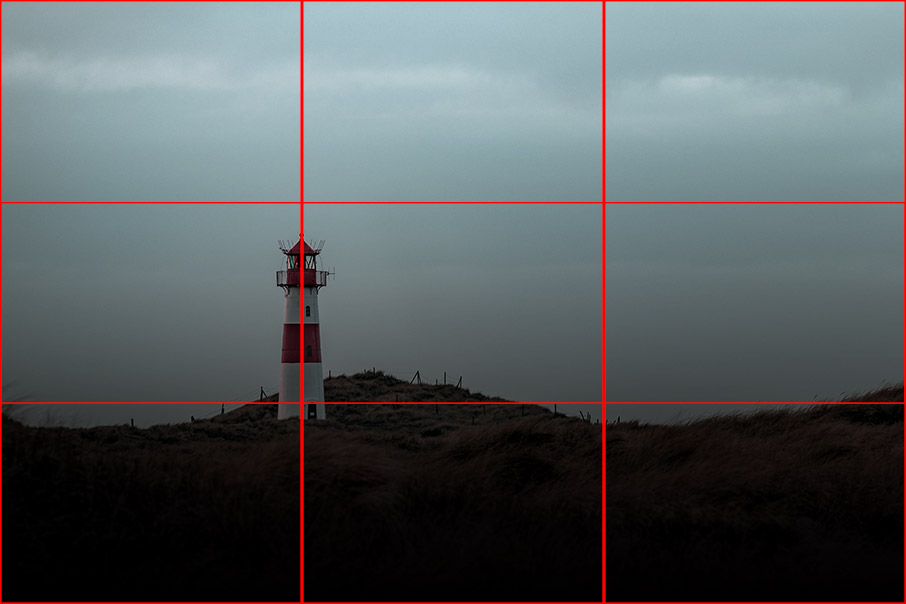
Golden Ratio
Ancient and similar to the rule of thirds: the golden ratio is still up to date. A line shall be divided in such a way that the ratio of the smaller part to the larger part corresponds to that of the larger part of the total line. This rule is very often found in nature and also in any form of visual work.
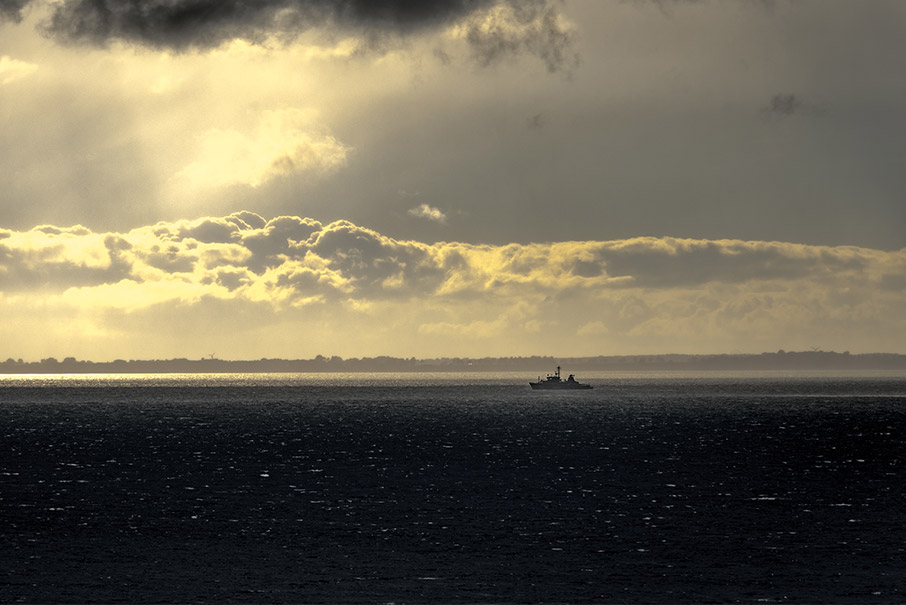 The ship is placed on the intersection of the golden ratio.
The ship is placed on the intersection of the golden ratio.
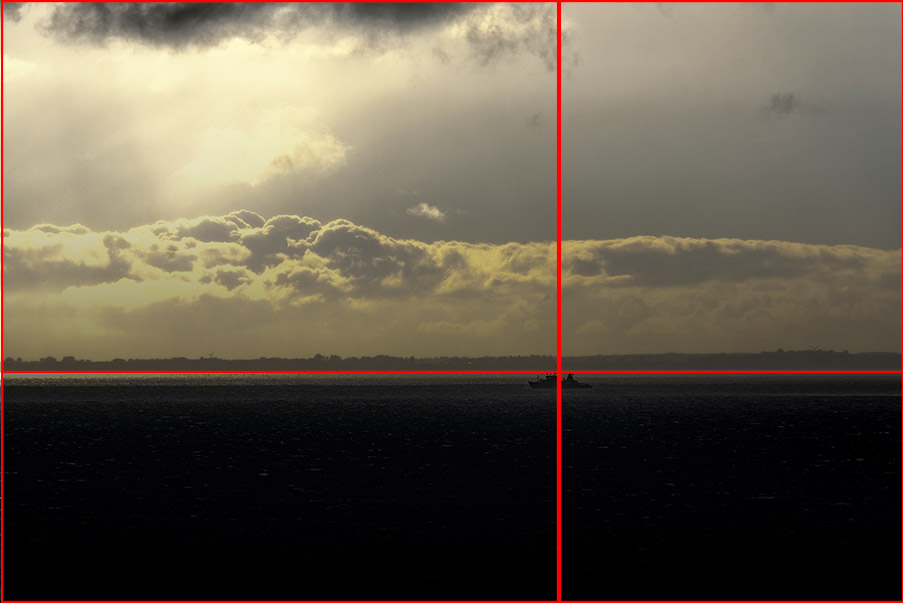
Fore- and Background
In landscape photography the most time it is necessary to have an attractive foreground for your subject, because only a blank photo of a mountain range or single mountain is the most time not enough, in other words this kind of picture loses very quick the viewers attention.
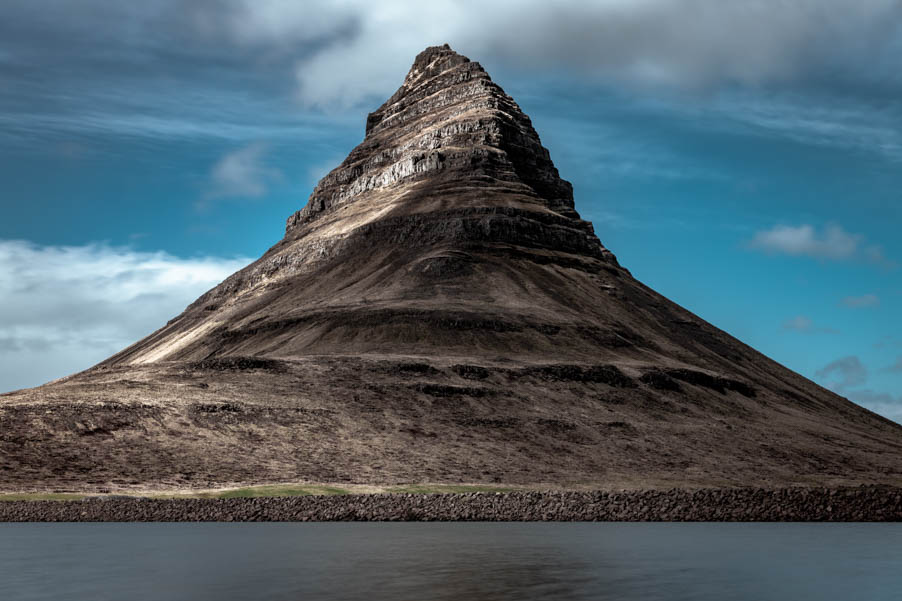 The Kirkjufell on Iceland with only a small amount of water in the foreground is not this exciting than with long exposed waterfalls.
The Kirkjufell on Iceland with only a small amount of water in the foreground is not this exciting than with long exposed waterfalls.
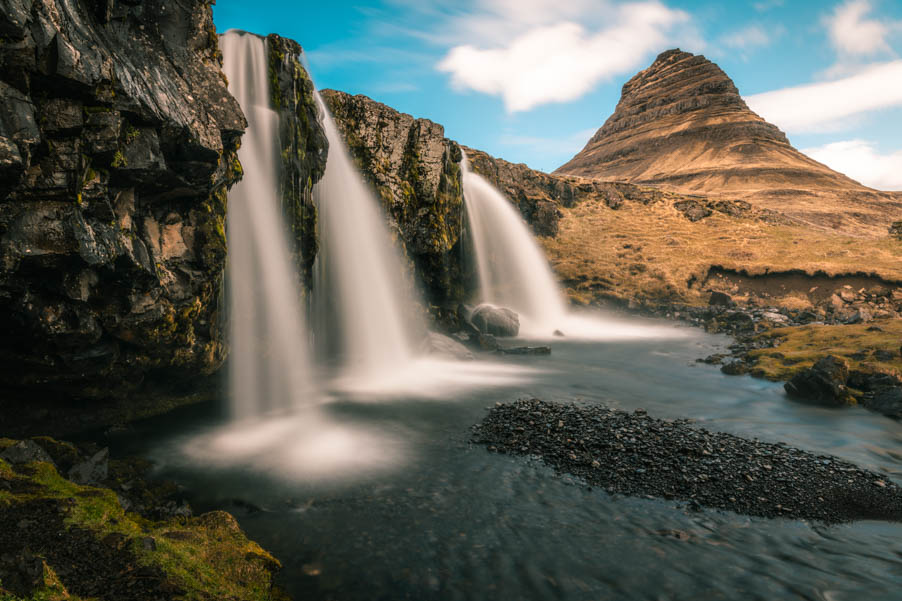 The same mountain with the waterfalls – much more to discover for the viewer and more three-dimensionality.
The same mountain with the waterfalls – much more to discover for the viewer and more three-dimensionality.
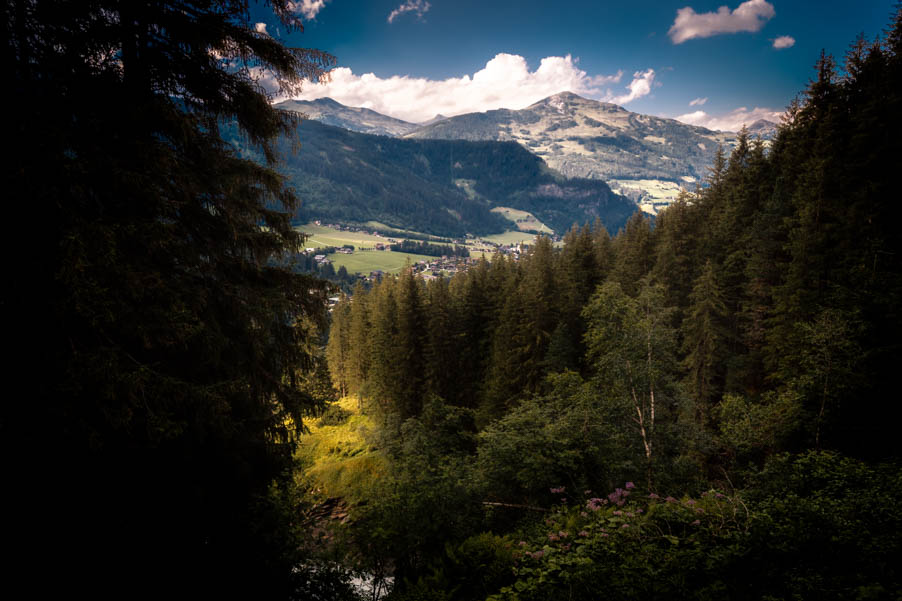 This picture offers many foreground elements and a strong depth. Flowers and big tree in the foreground, well-catched sunlight, where the placement is orientated by the rule of thirds and the background provides huge mountains and small houses. A lot to discover for the eye.
This picture offers many foreground elements and a strong depth. Flowers and big tree in the foreground, well-catched sunlight, where the placement is orientated by the rule of thirds and the background provides huge mountains and small houses. A lot to discover for the eye.
Always be aware that you can change your position, your distance and much more before your shoot. Especially the focal length is a very strong parameter, with a longer focal length you can get your foreground much closer to the background. With a short focal length you set everything wide – the elements have a bigger distance to each other.
Simplicity
As almost always in life, simplicity is one of the fundamentals for a success. This also applies to photography. Don’t put effort in elements, that won’t fit for your image. Uncountable lines which go in every direction or billion of colors in one image will just exhaust the viewer.
For landscapes you shouldn’t have any kind of disturbing elements in your picture like trash or unbidden persons, unless you take documentary shots. It is important to capture the beautiful and the necessary and not the ugly and unneeded.
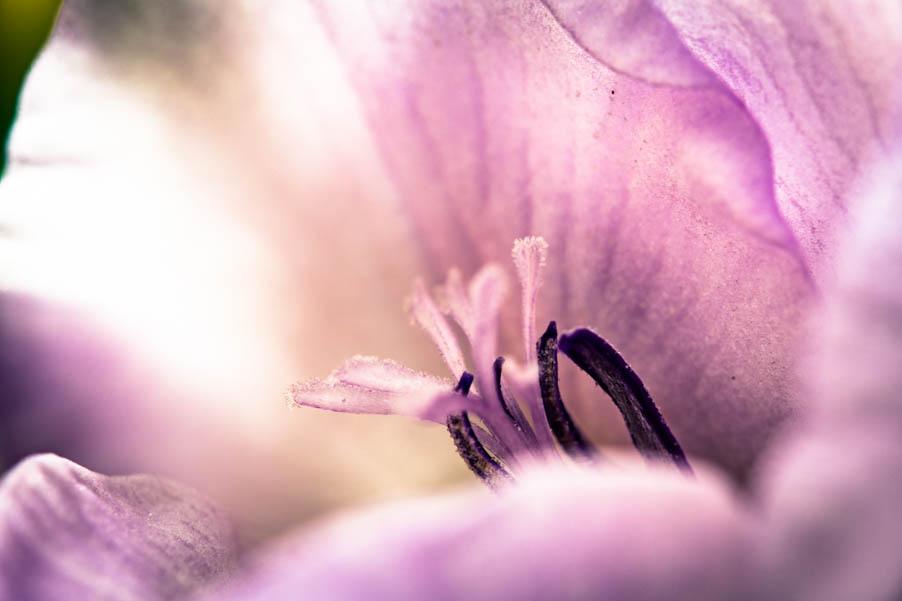 In macro photography it is kind of easy to capture simplicity because of the small depth of field and you photographing such a tiny subject.
In macro photography it is kind of easy to capture simplicity because of the small depth of field and you photographing such a tiny subject.
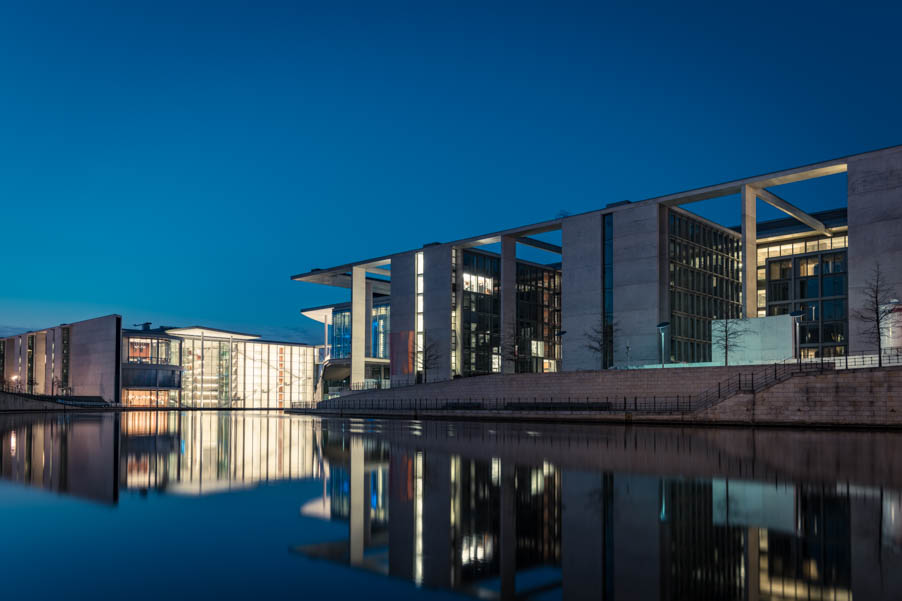 Just some parallel lines and a perfect contrast between the colors.
Just some parallel lines and a perfect contrast between the colors.
Vanishing Point
A vanishing point is the point where the perspective lines converge. If one photograph just the ground, and the camera is hold parallel to the ground, there would be no vanishing point, just a flat area. In photography, the vanishing point is usually on the horizon of the image. It provides dynamics and can provide an interesting detail, to which an image can have several vanishing points.
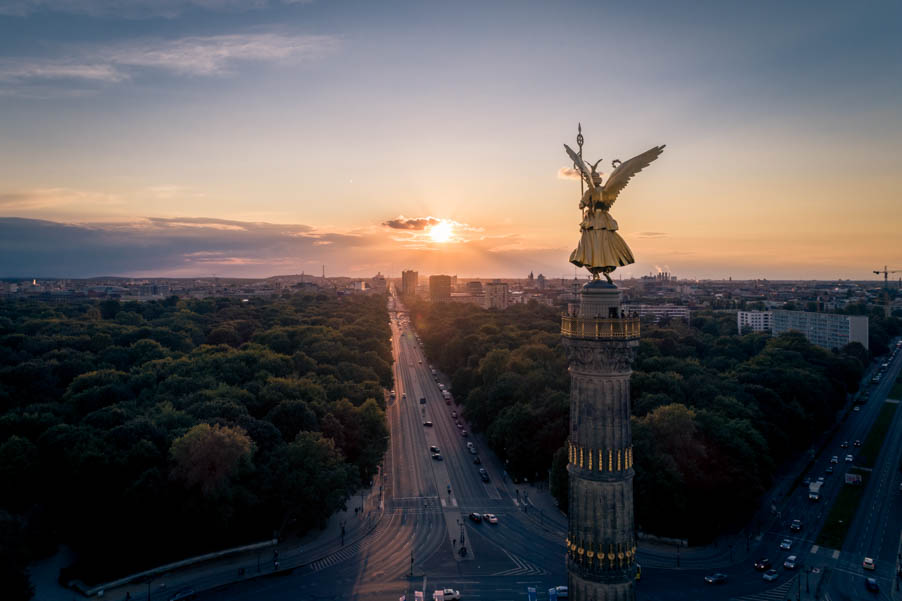 This picture offers a classical vanishing point. The road leads to the horizon.
This picture offers a classical vanishing point. The road leads to the horizon.
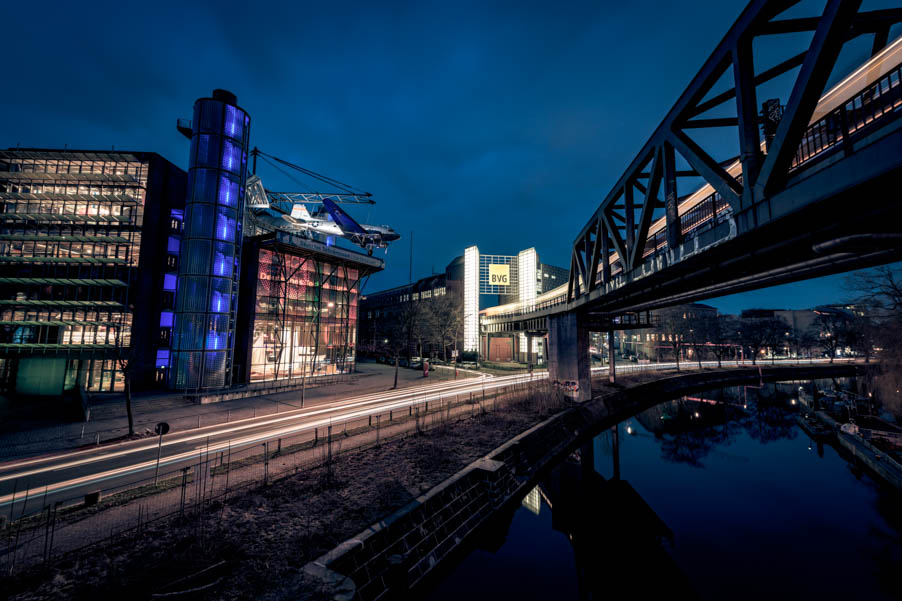 There are several vanishing points in this image. The road, the bridge and rooftops.
There are several vanishing points in this image. The road, the bridge and rooftops.
Good pictures don’t happen, they are taken
There is always a bit luck in landscape photography: the weather. But planning is a fundamental thing if you want to take really good pictures, so you can take a look on the forecast, visit the scene which you want to photograph in bright daylight to check the best spots and nowadays it’s no problem to check the sun progression with a smartphone app. There are also situations where any kind of plan won’t help. But these situations are rare.
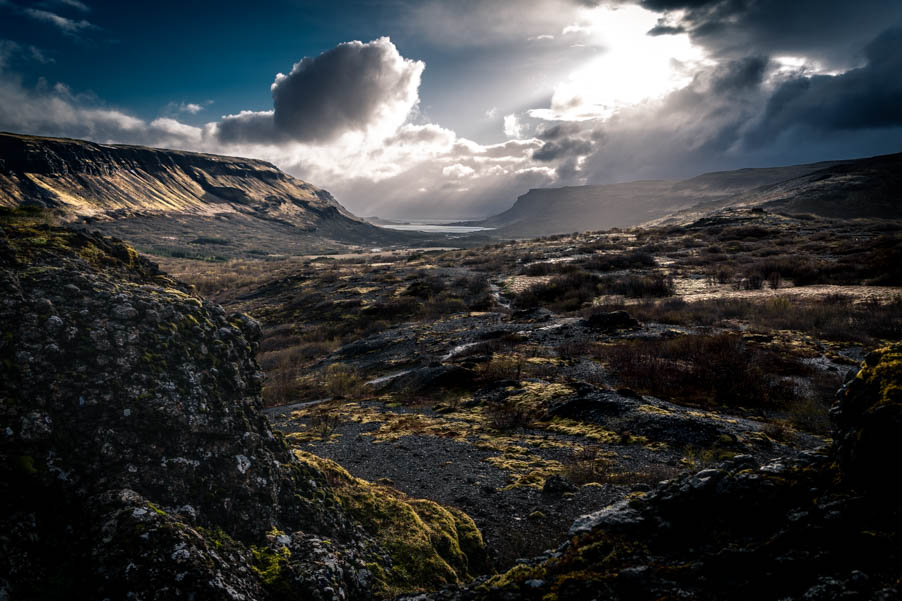 One of my favorite shots from Iceland: We had only some minutes plus strong winds to get this dramatic clouds and sun. So we improvised, went up a small rock formation and waited for the sun which came out. After that the sun disappeared behind thick clouds.
One of my favorite shots from Iceland: We had only some minutes plus strong winds to get this dramatic clouds and sun. So we improvised, went up a small rock formation and waited for the sun which came out. After that the sun disappeared behind thick clouds.
Composition is also a very personal matter, so your photo should have a personal note, convey an emotion. All these rules and tips could bring you closer to your goal: a good photo. And of course these rules can be broken and this is why you have to try everything possible and what comes in your mind. Reading and watching tutorials would make you a great theorist but no good photographer. So there is no mastering in composition, it’s an endless process of improvement, which is unique for every picture.

Report
My comments